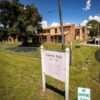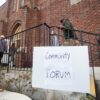By Karen Graham, Digital Journal
Billions of dollars in damage caused by Hurricane Ian has exacerbated an already urgent housing crisis for Florida.
Hurricane Ian made landfall as a Category 4 storm, slamming into the fastest-growing area of the country. Florida has added nearly 3 million people since 2010. And the Fort Myers area, which was ravaged by Ian’s deadly storm surge, was recently named the sixth fastest-growing city in the country by the US Census Bureau.
Southwest Florida is actually one of the cheapest areas of the state to live in and is a big draw for retirees. One of the big problems to come out of this disaster is that the area has recently drawn new residents from parts of the country that historically don’t have much experience with hurricanes.
In 2019, Florida saw the most migration from Northeast states including New York, New Jersey, and Pennsylvania, according to the Census Bureau, in addition to states in the Midwest.
The population in the Fort Myers-Cape Coral metro area was around 444,000 in 2000, according to Census Bureau data. By 2021, it had ballooned to more than 787,000.
And here is another disturbing problem amplified by this disaster: Most of the Florida homes in the path of Hurricane Ian lacked flood insurance, according to the New York Times. In the areas hardest hit by Ian, fewer than 20 percent of the homes had flood insurance
It is a tragedy for those on fixed incomes, as well as working poor families who make up the backbone of Florida’s economy, affordable housing advocates said, reports the Washington Post.
“It’s a tragedy for them and it’s also a tragedy for the entire community, which has already been suffering from not having people able to live where they work,” said Jamie Ross, president and CEO of the Florida Housing Coalition, which earlier this year estimated that there is a statewide deficit of 500,000 homes that are affordable to lower- and middle-income families.
In some areas of southwest Florida, homes not affected by the storm were still renting for as much as $5,000 per month, while two-bedroom apartments cost $2,000 per month.
On Monday, about 1,700 people remained in emergency shelters, while nearly 850,000 residents were still without power five days after the hurricane made landfall.
And as of Wednesday morning, there are still more than 177,000 customers in Lee County, Florida, without power, according to the Lee County Electrical Cooperative.
It could take a month or longer to restore power to some areas of Sanibel and Pine islands, Karen Ryan, public relations director for Lee County Electric Cooperative, told CNN.
Living without electricity is hard enough, but when you come back to what ever remains of your house or trailer and see the mold covering nearly everything, that can be disheartening.
All homes, even the cleanest ones, have fungal or mold spores. They cling to walls or float around suspended in the air. What separates a healthy home from a remediation-worthy tearout is moisture, which can cause the spores to feed and grow out of control.
Climate change is contributing to an uptick in the intensity and range of wet weather events and higher humidity, exposing more people to conditions that introduce moisture into buildings, according to the Centers for Disease Control and Prevention.
In hot, humid regions like Florida, there is always the potential for mold growth, even without a hurricane. But during a storm, if moisture enters a building through a broken door, a leaking window frame, or a hole in the roof, and then the power goes out and air-conditioning stops running, “there’s your formula for massive mold growth,” said Doug Hoffman, the executive director of the National Organization for Remediators and Mold Inspectors, a nonprofit trade group.
And again, the people most impacted will be those on a fixed-income or the working poor.
“Anyone in the rental market is going to see prices go up because of all the other people who will now be entering the rental market,” said Chelsea Plaisance, lead organizer for Lee Interfaith for Empowerment, an affordable housing advocacy group. “It’s going to push out an entire group of people who were already marginalized.”
See original story here.





